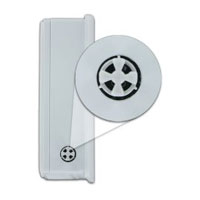Methods of Air Balancing
Air balancing a distribution system is needed to properly direct the air flow in order to optimize the system’s design. Flow rates are tested, adjusted, and  balanced as cubic feet per minute (CFM) or cubic meters per hour (m3/h). There are two traditional methods for balancing airflow at the terminals. The first is sequential balancing, which involves setting the zone and branch dampers in sequence. However, the most common method of air balancing is called proportional balancing.
balanced as cubic feet per minute (CFM) or cubic meters per hour (m3/h). There are two traditional methods for balancing airflow at the terminals. The first is sequential balancing, which involves setting the zone and branch dampers in sequence. However, the most common method of air balancing is called proportional balancing.







